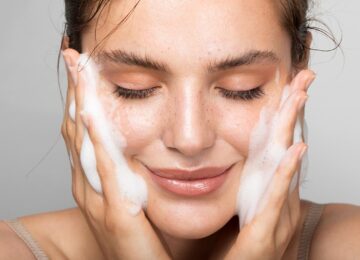Wandering the skincare aisle or scrolling through endless beauty products online can feel like deciphering a foreign language. With ingredient lists that stretch the length of a novel and marketing claims that promise the world, it’s no wonder so many of us feel overwhelmed. But understanding skincare labels is essential to making informed choices that truly benefit your skin. Here’s how to decode those confusing labels like a pro – so you can shop smarter and glow brighter.
Start with the Ingredients List
Every skincare product includes an ingredients list (also known as the INCI list – International Nomenclature of Cosmetic Ingredients). These are listed in descending order of concentration, meaning the first few ingredients make up the bulk of the formula.
Pro tip: If a product boasts a trendy ingredient like hyaluronic acid but it’s listed near the very end, it’s probably present in only trace amounts.
Watch out for:
- Water/Aqua: Often the first ingredient – it forms the base of most skincare.
- Alcohols: Not all alcohols are drying. Look for cetyl alcohol or stearyl alcohol – they’re fatty alcohols and help with skin softness.
- Fragrance/Parfum: A vague term that can sometimes irritate sensitive skin. If you’re prone to reactions, look for “fragrance-free” or “no added fragrance”.
Understand Common Claims
Marketing language can be tricky. Here’s what some common claims actually mean:
- “Hypoallergenic”: Implies fewer allergens but isn’t strictly regulated.
- “Dermatologist-tested”: A dermatologist may have been involved in testing, but it doesn’t mean the product is dermatologist-approved.
- “Non-comedogenic”: Designed not to clog pores, but results can vary from person to person.
Always combine label reading with patch testing if you’re trying a new product.
Check the Active Ingredients
These are the powerhouse components that target specific skin concerns, like acne, pigmentation, or ageing. Active ingredients are typically listed separately on products like sunscreens, serums, and acne treatments.
Some to know:
- Niacinamide: Great for brightening and balancing oil.
- Retinol: A vitamin A derivative that targets fine lines and acne (start slow!).
- Salicylic Acid: Helps unclog pores – ideal for blemish-prone skin.
If you’re using multiple actives in your routine, check labels to avoid overloading your skin or mixing incompatible ingredients.
Look for Expiry Dates and Packaging Details
Some products have a “Period After Opening” (PAO) symbol – usually a tiny jar with “6M” or “12M” – indicating how many months the product remains effective after opening. Others may have a direct expiry date. Light-sensitive ingredients like Vitamin C or certain essential oils are best housed in opaque or amber bottles to prevent degradation.
Consider Your Skin Type and Goals
When browsing skincare, whether it’s a gentle cleanser, nourishing moisturiser or a tan lotion that delivers a natural glow, always choose formulas that support your specific skin needs. Oily, dry, sensitive, or combination skin types will all respond differently to ingredients – so don’t be swayed by trends alone.
Beware of “Natural” and “Organic” Labels
These buzzwords sound appealing, but they can be misleading. In Australia, there are limited regulations around the use of “natural” and “organic” in cosmetics. Look for certified logos from recognised bodies (like ACO or COSMOS) if this is a priority for you.
Becoming fluent in skincare labels takes time, but the benefits are worth it
Not only will you avoid wasting money on products that don’t suit your skin, but you’ll also build a routine filled with ingredients that actually work for you.












